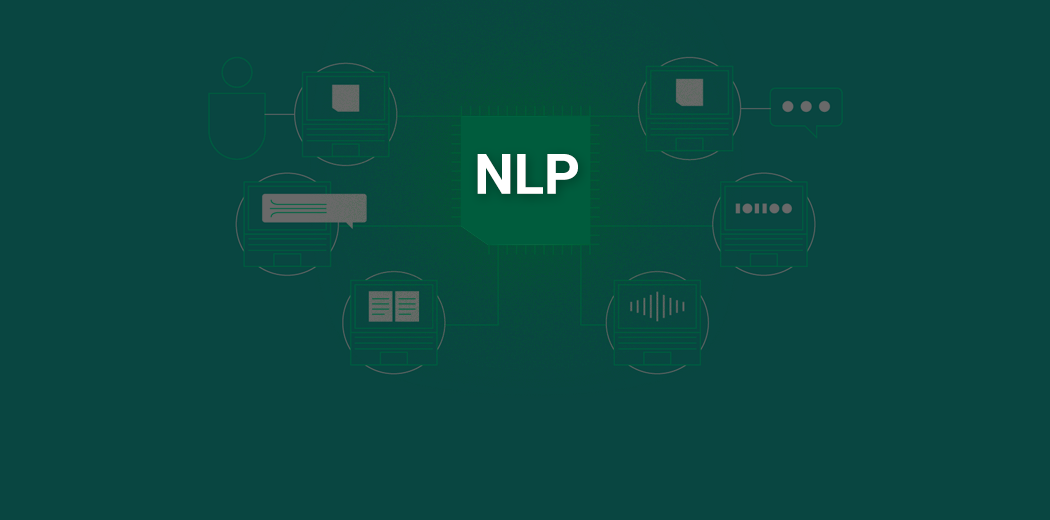This article was published as a part of the Data Science Blogathon.
Introduction
Natural language processing (NLP) is the branch of computer science and, more specifically, the domain of artificial intelligence (AI) that focuses on providing computers the ability to understand written and spoken language in a way similar to that of humans.
Natural Language Processing (NLP) is a fascinating field that seamlessly merges computational linguistics, incorporating rule-based modeling of human language, with cutting-edge statistical, machine learning, and deep learning models. When delving into NLP interview questions, it’s crucial to comprehend the intricate synergy among these technologies. Through this amalgamation, computers gain the ability to truly ‘understand’ the entirety of human language, be it expressed through text or speech data. This comprehension extends beyond mere words, encompassing the underlying purpose and even the emotional nuances embedded in the communication.
NLP interview questions often delve into the fascinating realm of Natural Language Processing. NLP drives systems translating languages, responding to spoken commands, and summarizing data. You may have encountered NLP in voice-activated GPS, digital assistants, or customer service chatbots. It also plays a growing role in corporate solutions, enhancing business operations and staff productivity.
What is the importance of natural language processing?
Businesses use the massive volume of unstructured, text-heavy data and require a method for processing it efficiently. Most of the data produced online and saved in databases are natural human languages. Until recently, organizations were unable to inspect this data efficiently. Herein lies the utility of natural language processing.
Table of contents
- Introduction
- What is the importance of natural language processing?
- NLP Interview Questions
- 1. What do you mean by NLTK?
- 2. What is Parsing in regards to NLP?
- 3. What do you mean by Syntactic Analysis?
- 4. In NLP, what is Pragmatic Ambiguity?
- 5. What does Stemming imply in NLP?
- 6. What do you mean by POS tagging?
- 7. What does Lemmatization imply in NLP?
- 8. What does Text Normalization mean in NLP?
- 9. What does TF-IDF mean in Natural language processing
- 10. What is NES?
- Conclusion
NLP Interview Questions
1. What do you mean by NLTK?
NLTK, which stands for Natural Language Toolkit, is a Python library. We use NLTK to process spoken language data. NLTK facilitates the application of techniques like parsing, tokenization, lemmatization, and stemming from comprehending natural languages. It aids in text categorization, parsing linguistic structure, document analysis, etc.
2. What is Parsing in regards to NLP?
In natural language processing, parsing refers to a machine’s understanding of a sentence’s grammatical structure. Parsing enables a device to understand the meaning of a word in a sentence along with the grouping of words, phrases, nouns, subjects, and objects. Parsing facilitates the analysis of a text or document to uncover valuable information.
3. What do you mean by Syntactic Analysis?
Syntactic analysis is a method used to derive meaning from sentences. A machine can examine and comprehend the order of words in a phrase through syntactic analysis. NLP makes use of the grammar rules of a language to aid in the syntactic analysis of the combination and order of words in texts.
Sentence: the dog saw a man in the park

4. In NLP, what is Pragmatic Ambiguity?
Pragmatic ambiguity refers to words with several meanings whose usage in any given sentence is context-dependent. The same language may have several meanings due to pragmatic ambiguity. Most phrases we encounter contain words with several meanings, leaving them open to interpretation. This varied interpretation results in ambiguity and is referred to in NLP as Pragmatic Ambiguity.
5. What does Stemming imply in NLP?
Stemming is the process of eliminating suffixes from words to get their root form. It is comparable to chopping a tree’s branches into its trunk. For instance, the stem of eating, eats, and eaten is eat. Search engines index the words using stemming. Stemming is crucial for natural language comprehension (NLU) and natural language processing (NLP).

6. What do you mean by POS tagging?
Parts of speech tagging, often known as POS tagging, is the process of detecting individual words in a document and classifying them based on their context as parts of speech. POS tagging is also referred to as grammatical tagging since it requires understanding grammatical structures and identifying the corresponding component.POS tagging is a complex approach since the same word can have several meanings depending on context. For the same reason, the same basic approach employed for word mapping is unsuccessful for POS tagging.
7. What does Lemmatization imply in NLP?
Lemmatization is mapping a word’s different forms to its root (also known as the “lemma”). Although this may look similar to the definition of stemming, it is distinct. For instance, after stemming, the word “better” remains unchanged. Upon lemmatization, however, this should become “excellent.” Lemmatization requires a deeper understanding of language. Modeling and designing effective lemmatizers is still an open question in NLP research.
8. What does Text Normalization mean in NLP?
Consider a scenario in which we are using social media posts to discover event details. The terminology used in social media posts may be vastly different from that of, say, newspapers. A phrase may be spelled in several ways, including in abbreviated versions (with and without hyphens), names are often written in lowercase, etc. When designing NLP tools to work with such data, it is advantageous to get a canonical representation of text that incorporates these differences into a single representation. This process is known as text normalization. Common text normalization steps include converting all text to lowercase or uppercase, converting numbers to text (e.g., 7 to seven), and extending abbreviations.
9. What does TF-IDF mean in Natural language processing
TF-IDF, also known as Term Frequency-Inverse Document Frequency, is a method for determining the significance of a word relative to other terms in a corpus. It is a typical metric for information retrieval (IR) and summarization scoring. TF-IDF translates words to vectors and adds semantic information, resulting in weighted uncommon words that may be utilized in several NLP applications.
10. What is NES?
Named entity recognition, or NER, is finding entities in a written document that are more informative and have their context. These frequently signify locations, individuals, and organizations. Even though these items appear to be proper nouns, the NER method identifies much more than simply the nouns. In actuality, NER entails entity chunking or extraction, in which entities are split to classify them under several predetermined classifications. This process helps extract information further.
Conclusion
One of the most significant advantages of NLP is that it enables computers to communicate with humans using natural language. In NLP interview questions, language-related behaviors are measured naturally. Thanks to Natural Language Processing, computers can now hear, analyze, measure, and identify relevant speech portions. NLP applications, including chatbots and sentiment analysis, contribute to market intelligence. Since its introduction, NLP interview questions have gained popularity, with technologies like Amazon’s Alexa widely used. Moreover, business intelligence and consumer monitoring, emphasized in NLP interview questions, are rapidly gaining pace and will soon dominate the enterprise sector. Key takeaways from the article: NLP’s impact on communication, widespread use in technologies, and its growing influence on business intelligence and consumer monitoring.
- NLP is an area of computer science and AI (AI)
- In NLP, parsing is a machine’s knowledge of a sentence’s grammar.
- When you remove a word’s suffix, you return it to its original form.
- TF-IDF stands for Term Frequency-Inverse Document Frequency
The media shown in this article is not owned by Analytics Vidhya and is used at the Author’s discretion.







